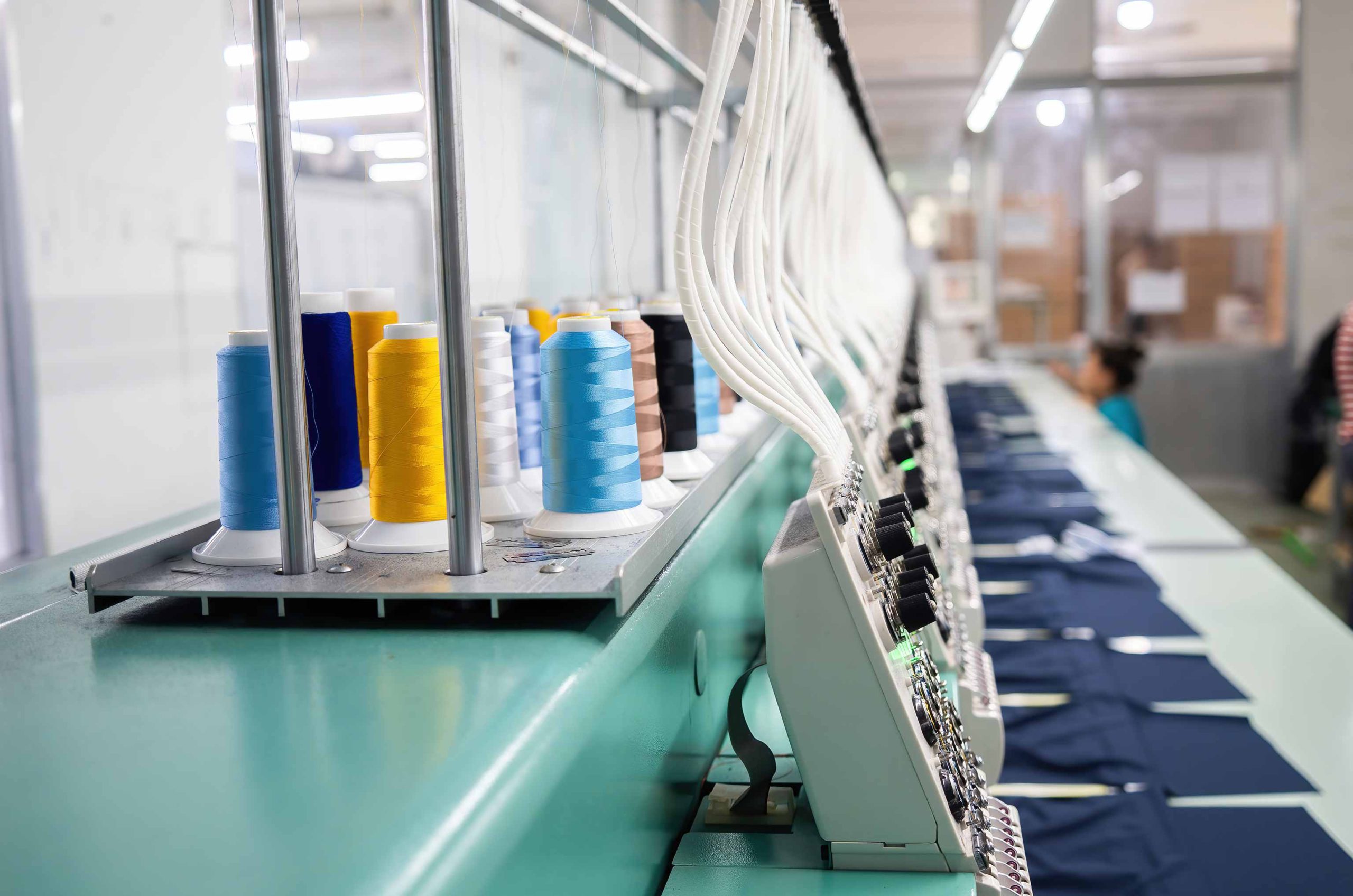Garment Costing: How costs are calculated in the fashion industry
-
Introduction
When it comes to the fashion industry, there are so many moving parts and pieces that go into making just one piece of garment. This is why garment costing is often considered to be one of the most complex operations in a fashion business.
As you might know, the basic principles of costing are an essential part of any business, and especially that of a fashion company. It allows the company to understand how much it spends on various factors and how they affect its profitability in the long run. Every cost and expense have to be monitored closely to prevent unnecessary wastage of finite resources and ensure the profitability of the business.
By definition, costing is the process of assigning value to all resources used in the production of goods and services, including materials, labor and other costs associated with production. In garment manufacturing, costing is the process of combining all expenses incurred in the making of a garment—including the direct labor cost, materials cost, conversion costs and overhead cost.
In this article, we will explain the definition and components of garment costing, its importance, the various costing stages in the fashion industry, and how you can use enterprise resource planning systems to reduce production costs.
-
What is ‘manufacturing cost’?
According to the American Accounting Association, cost is defined “the foregoing, in monetary terms, incurred or potentially to be incurred in the realization of the objective of management, which may be manufacturing of a product or rendering of a service.”
Simply put, manufacturing cost is the total expenditure incurred to produce a product or service. It is also called conversion cost, production cost and direct material cost. The total cost includes the costs of raw materials, labor, and other expenses like utilities, rent etc.
READ MORE: What you need to know about Supply Chain Management in Apparel Industry
Generally speaking, there are two types of costs for a business: direct and indirect costs. Direct Costs are expenses on actual costs incurred during the production of goods or services (i.e., labor, materials). Whereas, Indirect Costs are the general expenses that keep a business running but cannot be directly attributed to the production of a product (i.e., rent, utilities).
In addition, you should know that there are several techniques used in the fashion industry to calculate costs. These include: 1) Direct costing, 2) Absorption costing, 3) Variable costing, 4) Activity-based costing, and, 5) Standard cost accounting.
Before we go any deeper into what all of this means, let’s first understand why garment costing is so integral to running a fashion business.
-
The importance of apparel costing
Apparel costing is a tool that helps manufacturing companies to determine the cost-per-unit of manufacturing a product. It is essential for getting an accurate analysis of costs and ascertaining the profitability of each product. It acts as a guide for fixing the price of the goods being manufactured.
There are several objectives that can be achieved through apparel costing:
- Costing helps a business classify, sub-divide costs and allocate budgets for every operation. It allows them to set business policies for measuring efficiencies and implement budgetary control.
- Apparel costing also allows a business to clearly see where resources are being wasted or just not being utilized optimally. By doing so, it allows a business to plan and make the best of use of limited resources, thereby helping keep overall costs down and profits high.
- It is an important tool of management control, helping with cost audits and price determination. Costing helps businesses make better business decisions by accurately predicting costs of production, as well as improving profitability and increasing customer satisfaction.
- It helps businesses identify areas where they can reduce their overall expenses. For instance, if certain raw materials are more expensive than others then it will result in higher production costs which can be avoided by substituting those raw materials with alternative ones that are more affordable but equally effective at producing similar results.
- The costing process also helps the management in charting out an effective expansion strategy. It allows them to take suitable steps to account for and manage seasonal variations in volume, costs and so on.
- Apart from problems, costing also shows you what’s going well in the business. It helps the management in formulating and implementing incentive and bonus plans.
Overall, it is safe to say to a good apparel costing strategy is the bedrock of any successful business.
-
Components of costing in garment manufacturing
Typically, a product merchandiser is responsible for doing the costing of a product. The merchandiser has to keep in mind the cost of various raw materials, operating cost of the company, their competition, and expected profit of the company. Simultaneously, s/he has to be mindful of the buyer’s costing expectations.
The following are the main components of the manufacturing cost of a garment:
- Fabric – This is generally the most important factor in the costing of a garment, accounting for nearly 60-70% of the cost of a basic style garment. Fabric can often be the significant factor in evaluating the cost of producing any garment.
- Trims – Apart from fabric, anything else used to complete a garment goes into the Trims category. This can include threads, buttons, zippers, elastic, rivets, lace, labels or any other accessories. The cost, quantity, and the labor required to apply trims all add up to the cost of a garment.
- Cut, Make & Trim charges – Also called CMT (cut-make-trim) or CMTP (cut-make-trim-pack) cost, these are the ‘cost of making’ charges. You can calculate CMT by multiplying the total cost per hour to the total number of hours it takes to make the style, divided by the number of units produced. The contractor’s profit is also added to this cost.
- Value Addition – Special processes such as Printing, Embroidery, Washing or Applique, among others are clubbed under the umbrella of ‘value added services’ in the garment manufacturing industry. Each of these can include a complicated subset of costs of its own.
- Garment Testing – The inspection and testing of garments are done at different stages of garment manufacturing—raw material, partially finished or assembled stage as well as post-finishing. These include chemical tests, appearance after storage test, dimension stability tests, color fastness test and so on.
- Quality Control – The cost of quality control-related processes fall under four main categories, namely, appraisal costs, preventive costs and the costs of internal and external failure. They are the costs incurred for identifying and preventing defects during product development and production.
- Labels and Packaging – The cost of labels and packaging depends on the size, thickness, printing mechanism and material you choose. But the number of labels per item plays a big role too and should be kept in mind.
- Transportation and Logistic Costs – The expenses involved in moving products from the factory to your store or warehouse are filed under freight and shipping costs. They can vary widely depending on where you’re sourcing your products from.
- Overhead – These are the costs incurred by your factory such as rent, electricity bills and repairing equipment. This includes indirect labor costs that aren’t necessarily linked with any particular product or service
- Profit of the company – As self-explanatory as it gets, this ‘cost’ is essentially what your business earns for selling the goods produced.
READ MORE: How digital Tech Packs can prevent costly manufacturing errors
-
Stages of costing
The 4 main stages of costing in fashion manufacturing are:
- Preliminary or pre-costing stage refers to the initial estimates one can make before the samples are made. This gives a rough idea as to what to expect from the design, based on similar styles. This allows you to eliminate or modify any of the designs that appear too costly for manufacturing.
- The cost of adoption is a breakdown of the expected investment required for the design in terms of materials, labor and overhead. This includes breaking the style down into its components and figuring out how to assemble them so the design can be produced at a specific price point. The assessment is done based on samples and available data.
- Pre-production costing includes all fixed expenses that have been estimated to be incurred prior to production based on standard production methods. This costing has to be done before actual production of a line begins.
- Actual cost analysis is the original estimates of materials and labor costs, compared to the allowed budget for a project. It refers to the accurate estimation of the price of a product at different stages of production, and keeping track of how much money you spend as you go along.
-
What is a fashion cost sheet? How you can make a cost sheet
A garment or fashion cost sheet is a statement which shows the various components (as discussed above) that constitute the total cost of a particular product. A cost sheet is prepared based on historical costs and estimated costs.
To create a sample fashion cost sheet, you’ll need the following information:
- Materials Consumed
- Direct Labour/Wages
- Direct Expenses
- Prime Cost – (1 + 2 + 3)
- Factory Workers Overhead
- Work/Factory Cost – (4 + 5)
- Office/Administrative Overheads
- Total Cost of Production – (6 + 7)
- Cost of Goods Sold
- Selling and Distribution Overheads
- Total Cost aka Cost of Sales – (9 + 10)
- Profit
- Sales – (11 + 12)
You can copy the above tabulation and just fill in relevant values against each category to create your own free Fashion Cost Sheet template.
-
Using WFX Fashion ERP to reduce fashion manufacturing costs
WFX ERP is a cloud-based enterprise resource planning solution that can help you reduce costs and boost productivity. It is used by companies in the fashion industry, including InQube, Indochine, Phong Phu, and Asmara. If you are looking for ways to reduce costs in your company, consider WFX ERP.
In fact, here are four ways that WFX ERP can help minimize costs:
- Reduce inventory costs by helping you optimize the amount of inventory stored at each point in your supply chain.
- Reduce labor costs by automating manual tasks so people spend more of their time on higher value activities instead of repeating the same task each day or week (for example, entering data into spreadsheets).
- Boost productivity by making it easier for employees to access information they need when they need it (for example, being able to look up customer details without having to wait until someone sends it to them).
- Reduce material costs by making sure that managers can see and utilize every resource to its maximum capacity. For instance, EAM Maliban Textiles used WFX ERP to eliminate low-value, repetitive manual operations to free up more time for material management, thereby reducing material costs by 5%.
- Reduce sampling costs by using analytics to monitor and analyze how each product is performing and selling. As an example, one of the companies that uses the WFX solution is Song Hong. They’ve been able to reduce their sampling costs by keeping track of every sample (including its iterations) developed for each buyer using WFX’s Sample Feedbacks and Approvals tool to improve their sample hit rate.
As you can see, using WFX ERP is a great way to reduce costs in your company. To learn more about how WFX ERP can help you, contact us or request a demo today.
-
Conclusion
We hope that this post has helped to clear up some of the confusion around fashion manufacturing costs. If you’re looking for a tool to help manage your fashion business better, we recommend checking out WFX Apparel ERP or WFX Fashion PLM software! It’s designed to help fashion, footwear and home furnishing manufacturers and brands control their inventory while making sure they never miss an opportunity.
READ MORE: 10 ways to speed up your fashion manufacturing process










